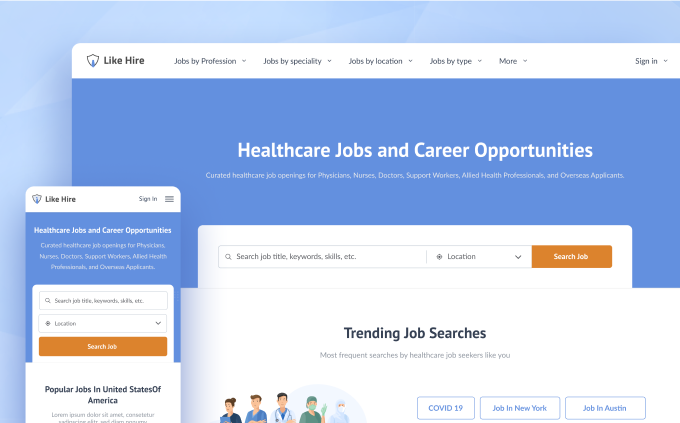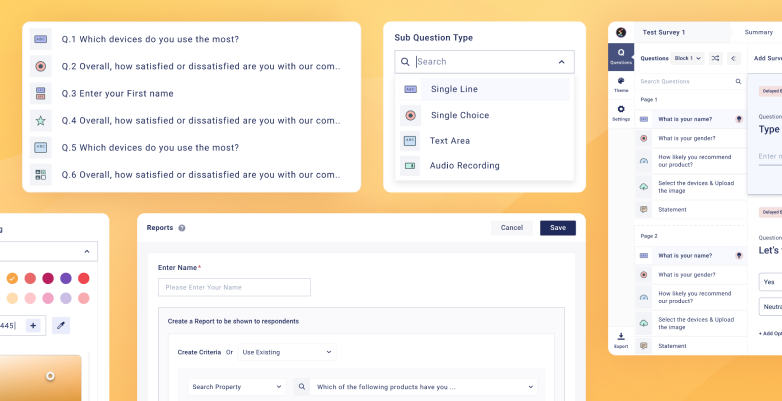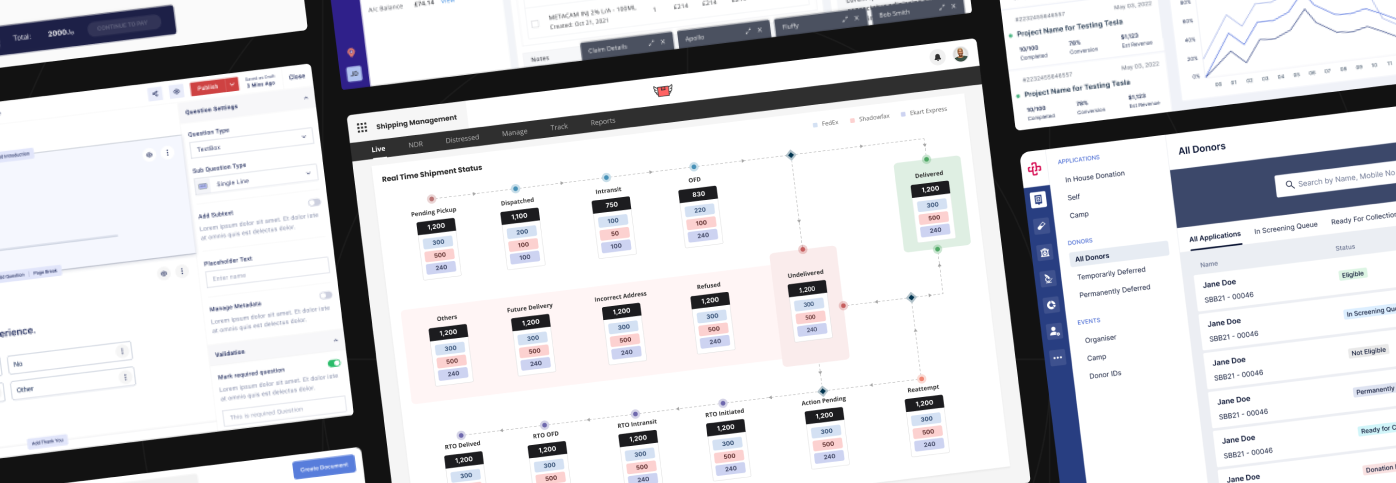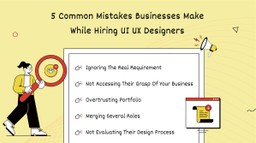Apr 18, 2024
5 mistakes to avoid while hiring UI UX designer
Inspirations• Aakash Jethwani• 11 Mins reading time

Are you looking to hire UI UX designer for your next project? Are you worried about hiring designers who don’t meet your expectations?
In today’s digital age, the role of UI UX designers in shaping exceptional user experiences has become more critical than ever.
However, hiring the right talent for this role can often result in missteps that hamper the company’s success.
From overlooking essential skills to misjudging cultural fit, there are numerous issues to tackle when seeking the perfect UI UX designer.
In this blog, we’ll look into the 5 most common mistakes businesses make when planning to hire UI UX designer.
By understanding these mistakes, businesses can refine hiring and attract top-tier talent.
Whether you’re a startup, a small business, or a large corporation, steering clear of these pitfalls can be the game-changer in securing a UI UX designer who will catapult your digital product to new heights of success.
Let’s explore these common pitfalls and ensure the next UI UX designer hire succeeds.

Boost Conversions with Top UI UX Designers
Get Free ConsultationCommon mistakes businesses make while hiring UI UX designers
Ignoring the real requirement
Mistake
One of the most crucial aspects businesses often overlook when hiring UI UX Designers is the real requirements of the design position they need to fill.
This oversight often stems from a need for more clarity regarding different design roles, such as UI Designer, UX Designer, graphic designer, or illustrator.
Businesses often fail to grasp the unique skillsets, expertise, and responsibilities associated with each role, which can lead to hiring a candidate who may not meet the position’s actual requirements.
Understanding these distinctions is crucial for making informed hiring decisions.
This mistake can lead to a mismatch between the hired designer’s skills and expertise and the business’s requirements.
For example, hiring a UX designer when the actual requirement is for a UI designer, or vice versa, can lead to suboptimal design outcomes and a miscommunication between the designer’s capabilities and the company’s design objectives.
How to Avoid?
Businesses should begin by profoundly analyzing their design needs and defining job requirements.
Understand the differences and distinct responsibilities associated with each design role.
Furthermore, engage in open discussions with team members to identify the specific design needs, which will help to provide valuable insights into the type of designer required.
By thoroughly understanding the company’s design goals, target audience, and project requirements, businesses can effectively determine whether they need to hire a UI designer, UX designer, or a professional with a combination of specialized skills.
Businesses can make informed decisions when hiring UI UX designers by aligning the hiring process with the actual requirements of the role and ensuring a clear understanding of the distinctions between design roles.
This approach empowers businesses to hire UI UX Designers with the necessary skills and experience to fulfill the organization’s specific design needs, ultimately leading to more successful and impactful design outcomes. By following these steps, you can be confident in your hiring decisions.
Also, checking the skills of UI UX designers before hiring them is a must for any organization.
Not accessing their grasp of your business
Mistake
One area that businesses should pay more attention to is assessing whether the designers truly understand their requirements and goals.
Businesses must evaluate this aspect to avoid hiring designers who may not fully grasp the company’s products or services, target audience, brand identity, and overall business objectives.
Ignoring this issue can result in designs that must be more effectively aligned with the company’s strategic direction, potentially leading to a disconnect between the design solutions and the business’s actual needs.
Businesses may also miss the opportunity to leverage the unique perspectives designers with a deep understanding of the business can bring.
Hiring a designer well-versed in the company’s operations, market positioning, and customer base has better potential to create user experiences that resonate with the target audience and contribute to the business’s overall success.
How to Avoid?
Prioritize evaluating the candidates’ grasp of business during the hiring process. This can be achieved by incorporating specific questions, scenarios, and practical exercises into the interview process that assess the designers’ understanding of the company’s products or services, target audience, etc.
Additionally, ask candidates to present previous work case studies showing their ability to align design solutions with business requirements.
By assessing the candidates’ understanding of the business context, businesses can ensure that they hire UI UX designers who possess strong design skills and can create solutions that effectively support the company’s goals and objectives.
This approach can result in selecting designers who are better positioned to contribute meaningfully to the business’s success through their design work.

Hire UI UX Designers for your Next Project
Hire UsOvertrusting portfolio
Mistake
Another common mistake businesses make is placing excessive trust in the designer’s portfolio, which may not provide a comprehensive view of their creative thinking, problem-solving skills, and design process.
While a designer’s portfolio provides valuable insights into their previous work, it may not fully showcase their creative thinking, problem-solving skills, and design process.
Relying solely on the portfolio can also lead to a limited understanding of the designer’s ability to adapt to new design challenges, collaborate with team members, and align their design solutions with the business’s specific needs.
By overtrusting the portfolio, businesses risk hiring a candidate based solely on their past work without thoroughly assessing their capacity to address unique design problems, think critically about user experience, and innovate in response to evolving design requirements.
How to Avoid?
Incorporate design challenges or practical exercises into the hiring process. Businesses should present real or hypothetical design scenarios to observe how candidates approach and address challenges, communicate their design decisions, and iterate on their designs based on feedback.
This approach provides valuable insights into candidates’ thought processes, adaptability, and ability to translate their skills into practical solutions.
Furthermore, use the designer’s portfolio as an essential part of the evaluation process and discuss it during the interviews and design challenges.
This allows for a deeper evaluation of the candidate’s role in the presented projects, the challenges they faced, and the impact their design decisions had on the business.
By combining portfolio assessment with design challenges, companies can better understand the candidate’s capabilities and suitability for the role.
Learn how to assess the portfolio of UI UX designers to make better hiring decisions.
Merging several roles
Mistake
Businesses often merge several distinct design roles into a single position, such as combining the responsibilities of UI designer, UX designer, and graphic designer into one overarching role.
While the intention may be to streamline the design process and reduce overhead, this approach has significant drawbacks.
By merging multiple roles into one, businesses can avoid creating a position that requires a broad range of skills and expertise, potentially diluting the focus on each specialized design area.
This can result in hiring a candidate who may not possess the full spectrum of skills required for each specialized role, leading to compromises in design quality and effectiveness.
How to Avoid?
To avoid merging several roles into one, carefully divide the specific requirements and responsibilities associated with each role. Based on the organization’s needs, create separate positions for UI design, UX Design, etc.
By clearly defining the distinct skill sets and responsibilities for each role, businesses can ensure that they hire candidates who have the expertise needed to excel in their designated area of focus.
This targeted approach allows for the recruitment of well-equipped designers to meet the specific demands of their assigned roles, leading to more effective and specialized design outcomes.
Furthermore, by maintaining clear distinctions between these roles, businesses can foster a more collaborative design environment where each designer can contribute their specialized skills to the overall design process.
This approach promotes a more holistic and comprehensive approach to design, ensuring that each aspect of the user experience receives the attention and expertise it requires.
Not evaluating their design process
Mistake
Businesses often focus on the end output of the designer’s work, such as final designs or visual assets, rather than thoroughly evaluating the underlying process that led to those outcomes, such as the designer’s design process, creative thinking, and problem-solving approach.
By neglecting to assess the designer’s approach to problem-solving and their creative thinking throughout the design process, businesses may miss crucial insights into the candidate’s adaptability, collaboration skills, and ability to address diverse design challenges.
When the evaluation is solely based on the end output, businesses may need to pay more attention to the aspects of a designer’s work, including their ideation process, user-centered methodologies, iteration cycles, and the incorporation of user feedback.
This oversight can lead to hiring designers who may need to align with the company’s preferred design methodology or be more adaptable to address evolving design needs.
How to Avoid?
Incorporate a comprehensive evaluation of the designer’s design process, creative thinking, and problem-solving approach into the hiring process.
This can be achieved by engaging candidates in discussions about specific design projects in their portfolio during the interview.
By understanding the reason behind design decisions, the iterative process, and the collaboration with stakeholders, businesses can gain valuable insights into the candidate’s approach to design challenges.
Additionally, they present real or hypothetical design challenges to candidates to evaluate their problem-solving abilities and ability to translate creative thinking into practical design solutions.
By observing how candidates approach these challenges, businesses can assess their adaptability, critical thinking, and ability to incorporate user feedback into their designs.
Furthermore, businesses should seek to understand the methodologies and tools the designer employs in their design process and their ability to adapt to different project requirements and constraints.
By evaluating the designer’s design process and approach, businesses can better understand their potential to contribute meaningfully to the company’s design endeavors, ultimately leading to a more informed hiring decision.
Also, it is important for businesses to look for these 5 qualities while hiring a UX Designer.
Takeaways
Understanding the business value of design and the five most common mistakes businesses make when hiring UI UX designers can refine the hiring process and attract top-tier talent, regardless of the company’s size.
Overlooking the fundamental requirements for the design position, failing to assess the designer’s understanding of the business, overtrusting the designer’s portfolio, merging several distinct design roles, and needing to thoroughly evaluate the designer’s design process are pitfalls to avoid.
Businesses should carefully define their job requirements, understand the differences between different design roles, prioritize evaluating the candidate’s grasp of the company, incorporate design challenges into the hiring process, maintain clear distinctions between specialized design roles, and assess the designer’s design process, creative thinking, and problem-solving approach comprehensively.
By aligning the hiring process with the actual requirements of the role and ensuring a clear understanding of the distinctions between design roles, businesses can make informed decisions to hire UI UX designers, ultimately leading to more successful and impactful design outcomes.

Talk to us for a better digital product experience
Contact UsFrequently asked question
What to look for when hiring a UI UX designer?
When hiring a UI UX designer, it’s essential to look for a candidate with a strong portfolio that demonstrates their ability to create intuitive and visually appealing user interfaces and their experience conducting user research, creating wireframes, and designing user interactions.
Additionally, consider their understanding of user-centered design principles, collaboration and communication skills, problem-solving abilities, creativity, technical proficiency, alignment with the company’s culture, and long-term business goals.
How do you judge a UI UX designer?
To judge a UI UX designer, assess their portfolio and ask for specific examples demonstrating their design process, problem-solving skills, and user-centered design approach.
Evaluate their design decisions, incorporate feedback, and ability to work effectively within a team. Pay attention to their creativity, technical skills, and alignment with the business’s values and mission.
Additionally, consider conducting a design challenge or providing a hypothetical design problem to assess their practical skills and approach to design problem-solving.
When to hire UI UX designer?
We recommend to hire UI UX designer in the early stages of the product development process, allowing them to contribute to shaping the product strategy, understanding user needs, and designing intuitive interfaces that align with the business’s overall vision.
However, hiring a UI UX designer can also be beneficial when planning for digital transformation, new product launches, or seeking to enhance the user experience of existing products.
Involving a UI or UX designer at the right time can help leverage their expertise to create products and experiences that resonate with users and drive business success.
Subscribe to
blogs
Related Blogs
Benefits of UI UX design: How it transforms user experience
Reading Time: 9 minutes In the dynamic world of digital interactions, UI/UX design stands as the backbone of creating meaningful and seamless experiences for users. Whether you’re a seasoned designer or just stepping into the realm of UI/UX, understanding the advantages of UI/UX Design and benefits of user experience design can significantly impact your approach to crafting interfaces that […]
Dec 28, 2023 • By Aakash Jethwani

Essential UI UX design tips for outstanding UX experiences
Reading Time: 9 minutes In the rapidly changing digital landscape, UI/UX Design holds unparalleled importance. Its significance lies in crafting experiences that resonate with users, ensuring their satisfaction and loyalty. A meticulously designed UI/UX becomes a secret weapon in the competitive tech space, setting a product apart from the crowd. Beyond aesthetics, it plays a pivotal role in increasing […]
Dec 27, 2023 • By Aakash Jethwani




